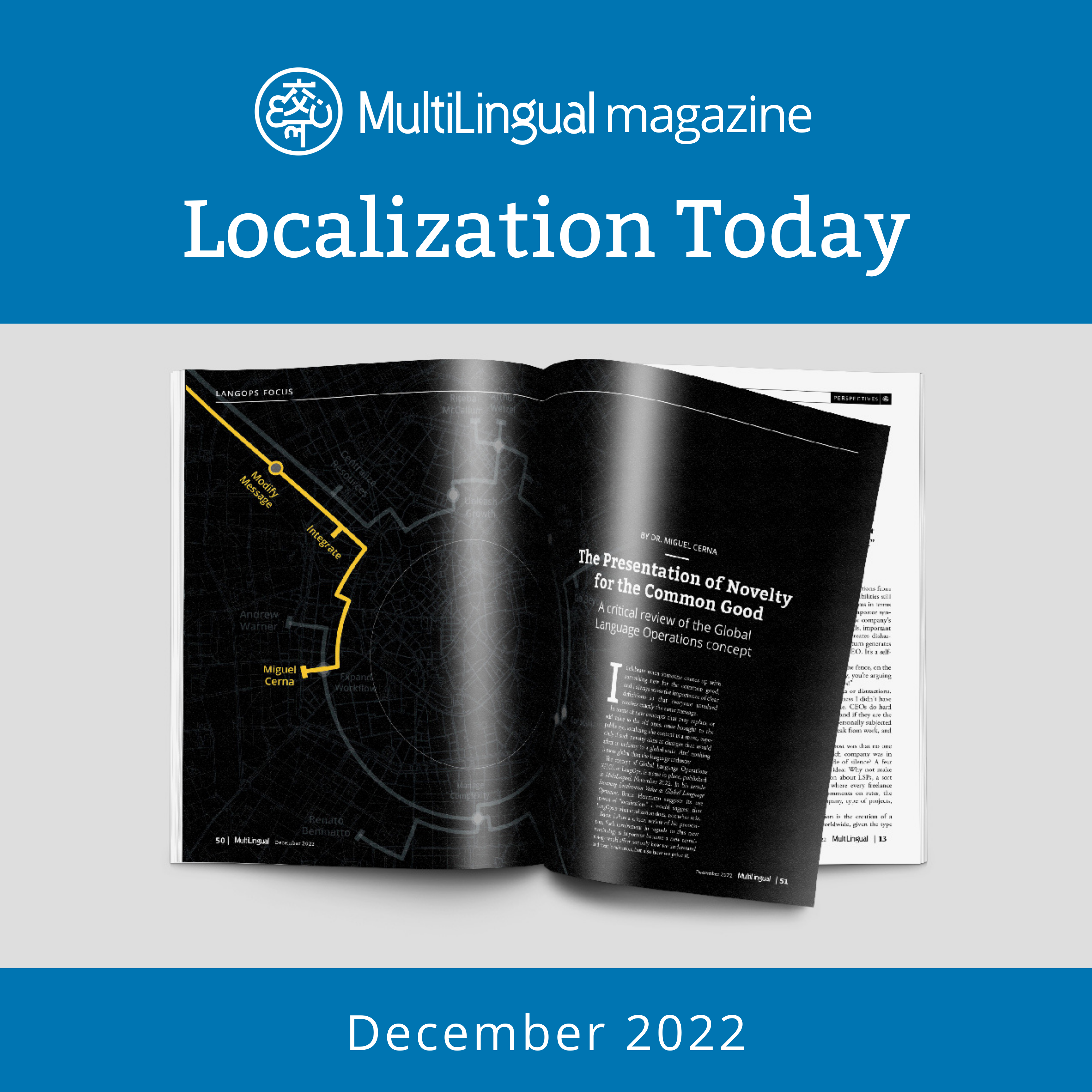Episode Transcript
[00:00:00] Allegorical distance and its impact on world building. By Kate Edwards most forms of creative media have relied upon some form of world building since the very inception of storytelling, from painted figures on cave walls to adventures captured on film, and of course, games played across a wide variety of digital platforms. In order to set the stage of the narrative, a host of methods and tools are leveraged to create the world in which the viewer or player will experience the artists creative vision. As one of the more recent forms of artistic self expression, video and computer games are especially adept at the process of world building, since many are literally a built world, not just a two dimensional, carefully controlled viewpoint. One of the most powerful tools that world builders leverage, that of allegory. Allegory is when an image, narrative, audio, or other type of content asset embeds a hidden or ulterior meaning, such as a moral, ethical, cultural, and slash or political message. In short, an allegory is when a piece of media uses one concept to represent a different concept. Many forms of creative media regularly employ allegory because its so effective as a storytelling device, particularly when the creator aims to infuse an intentional message or parable into their plot for games. This has been especially true with any worlds that are based in fantasy or science fiction, that is, worlds that are more fictional than actual. If youre a fan of the original Star Trek and Slash or Twilight Zone series from the 1960s, then youre already familiar with the power of allegory on television. Back in those days, it wasnt socially acceptable nor allowed by media censors to openly address sensitive topics. At the time those shows were airing on american televisions, the country was embroiled in a variety of social issues, from the Vietnam and cold wars to racial tensions and a rapid generational shift in values. While the creators of these programs wanted to address the issues of the day, they had to be extremely creative in wrapping those real world issues in a more palatable allegory. As such, both of these series had many episodes that implicitly confronted racism, sexism, and the futility of war and mutually assured destruction. Star Trek even featured the first multiracial kiss ever seen on television. The great majority of allegory is built upon some form of real world inspiration, which is used as a starting point for crafting the intended idea that will be conveyed.
[00:02:42] This inspiration is typically related to a social movement specific object, particular culture, historical event, or well known location. During the creative process, the inspiration is transformed into something meaningful within the fictional worlds context. The degree to which players perceive the intended allegory in a games world is entirely at the discretion of the creators. Sometimes the narrative demands that the allegory be more obvious, and at other times it's far more subtle. This is the process of explicitly determining what I call the allegorical distance. Allegorical distance refers to the amount of effort required for a player to perceive the real world inspiration behind an allegory.
[00:03:27] Short allegorical distance if the allegorical distance is too short, this may cause players to see past the intended in game meaning and instead focus on the original inspiration, leading to questions about why the game is focusing on specific real world cultures, events, or places. One example of this could be horizon zero dawn. Set in the 31st century, the science fiction world strove to create a unique environment of future earth in which humans live in a tribal style similar to past earth. This title received criticism from several indigenous groups, including for its visual portrayal of various tribes represented in the game, as well as for the use of words such as savages, braves, and primal. The portrayal of human civilization leaned heavily into a neo indigenous look that leveraged many precise visual cues from real world indigenous cultures, and thus there was insufficient allegorical distance between the inspiration and the final representation.
[00:04:31] If allegorical distance is intentionally made short for satirical effect, however, players often respond positively. A good example is grand theft auto five, which is set in the fictional city of Los Santos. When you see and experience the games world, it doesnt take long to perceive that Los Santos is pretty much a replica of Los Angeles. Its very close to the real place, but the creators took just a small step away from reality to create what is essentially a parody. This hyper real world empowers them to effectively do whatever they want in the fictionalized LA. As a native Angeleno, I can attest that the developers did an amazing job of capturing the overall feel of the city.
[00:05:15] Medium allegorical distance in the fantasy world of thedars in the Dragon Age franchise, the Dawlish elves are outcasts, immigrant people who represent an antiquated culture. This has led many players and observers to make comparisons to indigenous peoples, the Jews and or the Roma people. Dragon ages lead narrative designers acknowledged that the real world experience of those cultural groups did inspire the experience of the Dawlish elves. In this case, the allegorical distance was moderate because the intention behind the Dawlish portrayal was more subtle and not obvious to many.
[00:05:53] Large allegorical distance the allegorical distance in Halo two is large, but it was almost unintentionally and dangerously shorter. I know this because I was directly involved in its development in a futuristic science fiction world. The protagonist character, a super soldier named master chief, battles against the quasi religious conglomeration of alien races known as the Covenant. The Covenants goal is to activate seven installations known as halo rings, which would cause the extermination of all sentient life in the galaxy. The covenant is led by three prophets, one of whom is called the prophet of truth, which is an often used epithet for Islams. Muhammad, serving the prophet of truth is a character originally called the Dervish, which is a religious title in Sufisme. Given the religious nature of the covenant, as well as the american voice master chiefs mission to stop them, it was determined that these references created a potential allegory of the United States versus Islam. Halo two was scheduled to be released in 2004, not long after the 911 terrorist attacks on the US. We couldnt take any chances of this perception being made, so the dervish was changed to the arbiter, as this would help increase the allegorical distance and decrease the chances of creating a very unintended allegory. This example shows that unintentional allegories can be generated in the creative process. When a combination of assets inadvertently evokes real world people or events, the potential allegory may be perceived only by players from a specific culture or region. In other words, allegorical distance is not an absolute concept. Like most aspects of media, it is subject to cultural, geographic, political, social and other contextual forces that can render it quite malleable.
[00:07:53] Conclusion much of what determines the success of allegorical distance and its use in a created world is the degree of intentionality on the part of the creator. Thus, during the world building process, if allegory is intended to be leveraged for any content asset, such as the narrative or a visual or audio element, ensure that an explicit dialogue occurs about the degree of allegorical distance. If through open dialogue, it is determined that insufficient allegorical distance exists, meaning that the observer can easily see past the intended allegory and identify the original inspiration, then additional creative work may be necessary to revise the concept. And therein lies the biggest challenge, putting in sufficient time and effort to craft an allegory that truly serves the narrative and experience goals for the games player. Typically, the more allegorical distance is desired, the more creative work must be done to get to the point where it is sufficiently beyond perception. Whether your world demands a short or large allegorical distance is entirely at your discretion. There is no right or wrong amount. It's simply about being hyper aware of this dynamic in order to build better worlds that serve the narrative and engage players.
[00:09:14] This article was written by Kate Edwards an award winning game industry veteran who is a geographer and the principal consultant of geography, a Seattle based consultancy for culturalization and content strategy. She is the former executive director of the global game Jam and the International Game Developers association.
[00:09:35] Originally published in multilingual magazine, issue 229 June 2024.


